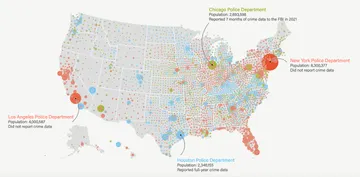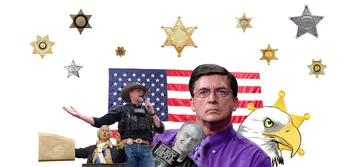Kathy Buettner, the spokeswoman for Cure Violence, responded to the story Friday and wrote: "The issues about the management of a site are handled at the local level, not at the Cure Violence national level."
New York City Mission Society, the organization that runs Harlem SNUG, said staffing changes were recently made but did not say whether allegations of gang activity were the cause.
Jeff Simmons, a spokesman for the Mission Society, did not provide more details.
Shawanna Vaughn thought she had landed her dream job in November, joining New York Mayor Bill de Blasio’s $12.7 million plan to curtail the bloodshed produced by the city’s deadly mix of street beefs and guns.
The 36-year-old mother of two went to work as a violence interrupter for Harlem SNUG (that’s guns spelled backwards), part of a nationwide program called Cure Violence that treats urban crime as a contagious disease. Vaughn earned a $32,000 salary interviewing victims of stabbings and shootings as they recovered in Harlem Hospital. She would offer to help mediate between victims and attackers, to defuse tensions. She always promised to keep their stories secret from the police.
Now Vaughn has become, depending on who is telling the story, a whistleblower or a snitch. In late February, Vaughn told a program director with the Mayor’s Office of Criminal Justice that Harlem SNUG employs active members of the Bloods gang and a subsidiary group called Shine Love, a street crew based out of a nearby public housing development. In an interview with The Marshall Project, Vaughn said neighborhood drug dealers used the SNUG office bathroom to deal narcotics. On one occasion, she said, a former SNUG employee showed up at the office with three armed men who pulled out their guns on a co-worker. On March 12 she was fired, and took her story to the New York Police Department.
“People’s public safety is at risk,” Vaughn said. “You have to tell the truth.”
Cure Violence declined to respond to questions about Vaughn’s charges or to say why she was fired. The Manhattan District Attorney’s office has a prosecutor looking into her allegations. Sarah Solon, a spokeswoman for Mayor’s Office of Criminal Justice, confirmed city officials are also investigating.
“The City takes these allegations seriously,” Solon wrote in a statement. “We do not want to lose sight of the important role that credible messengers and targeted programming can play in preventing violence, however it must be done in a manner that promotes safety.”
Safety has been a recurring issue for Harlem SNUG’s parent organization, Cure Violence, which uses former gang members to mediate simmering street conflicts between warring teenagers and young adults who are beyond the influence of local police.
Cure Violence was started under the rubric CeaseFire in Chicago in 1995 by Gary Slutkin, an epidemiologist who theorized that gang violence could be treated like an epidemic. (Slutkin had worked with the World Health Organization combating AIDS in Uganda.) Unlike an anti-gang model popularized in Boston during the late 1990s, in which ex-offenders and police officers worked together to curtail violence, Slutkin’s approach leans more heavily on members of the street culture.
“We hire the people who already know everybody around from the same neighborhoods, and they're very much trusted,” said Slutkin in a recent NPR interview. “There's a way to reverse epidemics. And in order to interrupt the transmission, you need to detect and find first cases.”
Cure Violence, based out of the University of Illinois at Chicago's School of Public Health, employs an estimated 350 outreach workers in 23 cities across the country and has a reputation as an effective anti-violence program. It has received more than $14 million from the Robert Wood Johnson Foundation, and a version of the program launched in Baltimore, called Safe Streets, has won multiple grants from the U.S. Department of Justice. Researchers at the Johns Hopkins Center for The Prevention of Youth Violence reported in a January 2012 study that the Baltimore program had mediated 276 disputes and prevented at least five homicides and 35 nonfatal shootings within a three year span. The program was the subject of an acclaimed documentary, “The Interrupters,” that followed CeaseFire street workers around tough Chicago neighborhoods over the course of a year.
But the Baltimore Health Department closed the Safe Streets office in December 2013 after police arrested an outreach worker for carrying a handgun. That announcement came a few weeks after the U.S. Marshals arrested one of the program’s most famous employees, Nathan "Bodie" Barksdale, who was an inspiration for the drug lord character Avon Barksdale on the HBO series “The Wire”. The Drug Enforcement Agency accused Barksdale of being a heroin dealer for the Black Guerilla Mafia.
Chicago cut funding for the program in that city (still called CeaseFire) after police grew suspicious that employees, many of whom were former felons, had returned to a criminal lifestyle, and after Tio Hardiman, the organization’s Illinois director was arrested for punching his wife (the charges were later dropped). Hardiman sounds disenchanted with the organization’s approach.
“You have to have a mix. You can’t just have former gang members working. You gotta have people who haven’t broken the law,” Hardiman told The Marshall Project.
Cure Violence spokeswoman Kathy Buettner declined to comment on the problems in specific cities and defended the program’s continued mission of sending ex-offenders into rough neighborhoods to stem shootings.
“We are training and retraining all the time,” Buettner said.
The issues in Chicago and in Baltimore didn’t impede officials in New York from expanding Cure Violence across the state under Operation SNUG. The state Division of Criminal Justice Services oversees ten SNUG offices and the city Department of Health and City Council funds sites in 14 police precincts.
Jeffrey Butts, a director of research at John Jay College of Criminal Justice, co-wrote an ongoing analysis of Cure Violence’s presence in high-crime New York City neighborhoods and found that homicide rates are on a downward trend in three areas that employed the interrupters in Brooklyn and in northern Manhattan.
“They can form relationships in high-violence communities that police, social workers and ministers simply can’t,” Butts said.
Vaughn, whose allegations have cast a shadow over the New York program, understands both sides of the law. The daughter of a 20-year veteran of the Bakersfield Police Department, she said she served four years in a California prison for robbing a Bank of America branch. Her brother was murdered in Bakersfield when he was 24.
The NYPD has since moved Vaughn and her two children out of her old apartment and into a safe house while police continue to investigate whether her former co-workers have connections to the Bloods. She is angry that her complaints were initially ignored, and fearful for her family’s safety.
“Cure Violence has made me start my whole life over,” Vaughn said. “I am so disgusted.”

